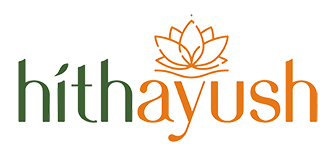Nutritious grain
Little Millet
Little Millet is the power house of nutrients and contains excellent antioxidant properties also it is mostly consumed like rice consumption. These are small grains which easy to cook whereas little millet is mostly cultivated in hill areas. Botanical name of little millet is panicum sumatrense, is a species of millet in the family poaceae
Little millets cultivation and growing season
Little millet originated in south-east Asia and nowadays it is grown throughout India. In India, little millet is cultivated mostly in Tribal belt of Madhya Pradesh, Chhattisgarh, and Andhra Pradesh
Odessa–Middle of the season,
Tamil Nadu – June, September and October
Karnataka, Madhya Pradesh and South Bihar-Last week- of June to first week of July
The crop is ready for harvest in 65-75 days after sowing and it a self pollinated crop with a chromosome number of 2n=4x=36
Little millets in Ayurveda
In Ayurveda millets belongs to the group of Trinadhanya Varga (group of grains produced by grass). Millet consumption is the best choice to those people suffering from vata dosha. Common gunas are cold in potency that means it will not create heat in your body. But people with hypothyroidism should avoid millet and processed food consumption
Little millets nutrition and Therapeutic effects
As for notional value, lt is the real health bomb it is rich in protein and fibre. It contain as much as 9.7 grams of protein and 7.6 grams of fibre per 100g
However, it also contains 60.9g of carbohydrates per 100g.
It provides the following nutrients per 100g calories 329Kcal, protein 9.7g, fat 5.2g, ash 5.4g, fiber 7.6g, carbohydrates 60.9g, calcium 17mg, iron 9.3mg, Thiamine 0.30mg, Riboflavin 0.09mg, Niacin 3.2mg
Research finds that edible forms of small millets are rich in antioxidants such as Tocopherols, Tocotrienols and carotenoids.
Carotenoid
Carotenoids are important in human nutrition and health. They help prevent atherosclerosis and strengthen immune functions. And carotenoids improves eye health thus they can converted to vitamin A
Tocopherols and Tocotrienols
Tocopherols and Tocotrienols are antioxidants, both of which have vitamin E activity
Vitamin E functions as a natural antioxidant to protect fat in membrane around cells such as nerves, heart, muscles.
It also protects red blood cells from possible damage by oxygen and protects us from carcinogenics, cardiovascular diseases and ageing.
This mix is seemed to have therapeutic effects, and it’s necessary to raise people’s awareness of the benefits.
Health benefits of little millet
They are rich in iron, protein, antioxidants, dietary fibre, magnesium, calcium and foliate. In fact all these nutrients are important for pregnant women. Hence the consumption make the mother and child more healthier
Benefits for babies – Helps in digestion, muscle recovery, metabolic rate , prevents Anaemia, weight management
They are low in the Glycol index and having high fibre content which help to prevent sudden increase of blood sugar and helps to decrease the diabetic level
This is the best wound/fracture healing food. It is a good choice for sports people they can eat as a replacement for rice they are high in fibre, potassium, zinc, iron, calcium,
Vitamin B and work as an antioxidant for your body
They contains magnesium which improves heart health. Niacin in the millet helps to lower cholesterol. It is also a good source of phosphorus which helps fat metabolism, body tissue repair and energy production.
Little millet provides bio active nutraceutical components such as phenols, Tannins, Phytates, Arytenoids
and tocopherol. It plays an important role in ageing and metabolic diseases
Little millets are highly nutritious grains which provide disease
Free health and it is also good for our babies health and weight gain. Consumption of little millet gives required amount of protein for breastfeeding mothers and pregnant women; they must add little millet in their daily diet.

About millet https://en.wikipedia.org/wiki/Millet
Buy online little millethttps://hithayush.com/product/little-millet-500g/
